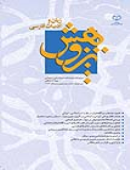سه نگاه به مرگ در ادبیات فارسی
محورهای موضوعی : پژوهشهای ادبیات کلاسیک ایران
1 -
کلید واژه: مرگ ستایی مرگ گریزی مرگ پذیری مولوی خیّام سعدی,
چکیده مقاله :
مرگ بزرگترین رویداد زندگی هر انسانی است و همیشه ذهن و اندیشة آدميان را به خود مشغول میدارد. در ادبیات مکتوب دینی و غیر دینی ایران قبل و بعد از اسلام، بیشترین جست و جوها و دل مشغولیهاي نویسندگان و شاعران و عالمان، در این خلاصه میشود تا راهی برای فرار از مرگ یا چیرگی بر هول و هراس ناشی از آن بیابند. اگر از ادبیات باستانی ایران و نخستين اسطورهها و حماسههاي آن دوران بگذریم، در آثار ادبی منثور و منظوم فارسی بعد از اسلام، که نخستين آثارش از میانة قرن سوم بر جای مانده است، جا به جا، شاهد چنین دغدغة تاریخی هستیم. با کمی اغماض، تلاشهای شاعران و نویسندگان ایران بعد از اسلام برای غلبه بر مرگ يا كاهش دغدغة ناشی از آن را میتوان در سه شیوه یا در سه اندیشه منحصر و محدود کرد: نخست كساني که آن را ستودهاند و به گرمی از آن استقبال کردند. مولانا جلال الدین محمد بلخی، بزرگترین نماینده این گروه به شمار میآید. دوم، دستهای که با نفرت و کراهت به مرگ نگریستند و برای غلبه بر آن، به خوشباشي و اغتنام فرصت روی آورده، کوشیدهاند، با این کار، از هول و هراس ناشی از مرگ بكاهند. خیام را باید پیشرو و نماینده کامل این دسته به حساب آورد. سوم، گروهی که واقعگرايانه به آن نگريسته، مرگ و زندگی را چونان دو روی یک سکه دیده و كوشيدهاند، ضمن بهره بردن از نعمات این جهان و خدمت به جامعه انسانی، توشه و زادِ راه زندگی دو جهان را در دوره زندگانی خویش فراهم آورند. اینان نه زندگی را فدای مرگ کردند و نه مرگ را فدای زندگانی. سعدی شیرازی بزرگترین نماینده این دسته به حساب میآید.
Death is the greatest incident in any person’s life and has constantly occupies man’s mind. In the written literary texts of Iran- both religious and non-religious; before and after Islam- most of the investigations and explorations and the concern of writers, poets and scholars was on finding a way for escaping death or overcoming the terror derived from it. The first literary prose and poetic works seriously concerned about this topic are from the mid third century after Islam; where we can notice and see such historical concern. That is of course if we chose to dismiss the ancient Iranian literature and the initial myths and epics belonging to that period. With a brief overlook, the attempts of the Iranian Post-Islam poets and writers for overcoming death or reducing its concern and obsessions can be limited to three major ideas; first, those who have admired it and welcomed it warmly. Rumi is the greatest representative of this group. Second, those who have regarded death with hatred and for overcoming it have sought to overcome it by ‘having fun in the moment’ (Carpe Diem) intending to reduce the terror and fright of death. Khayam is the pioneer and complete representative of this group. The third group is composed of those who have had a realistic attitude towards death; they have viewed life and death as two sides of a coin, tried to utilize the blessings of this world and pay service to mankind; while at the same time have provided their required supply for this life and afterlife. These have neither sacrificed life for death nor have sacrificed death for life. Sa’adi is the greatest representative of this group.


